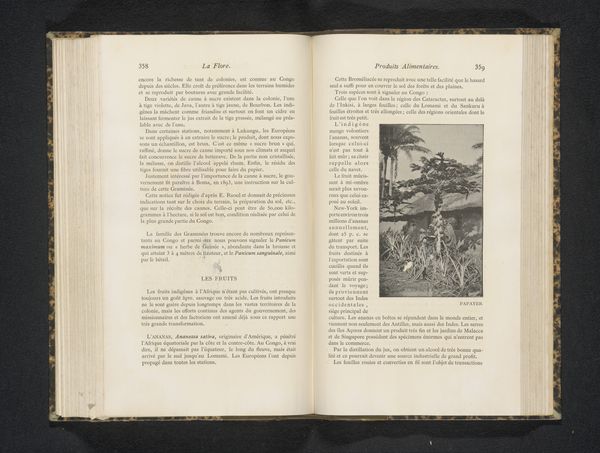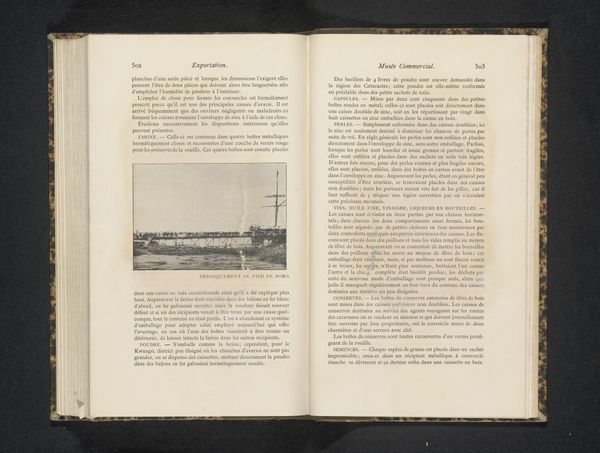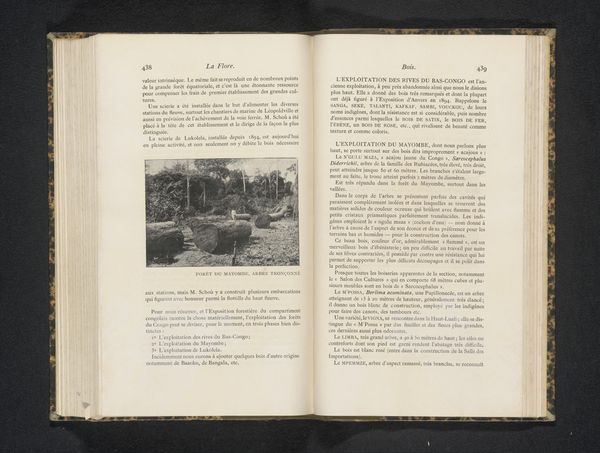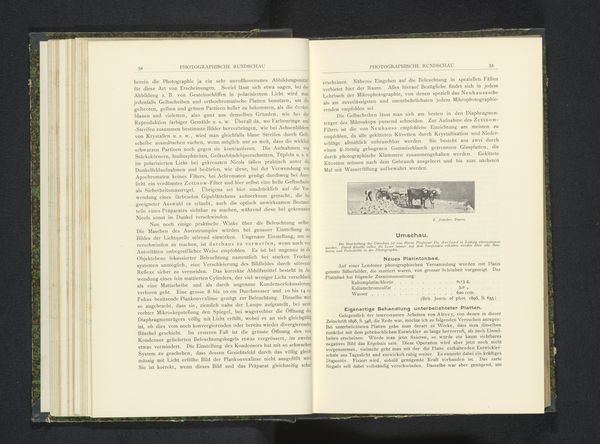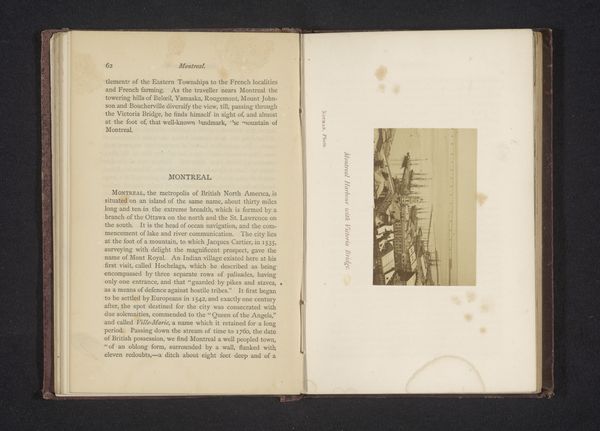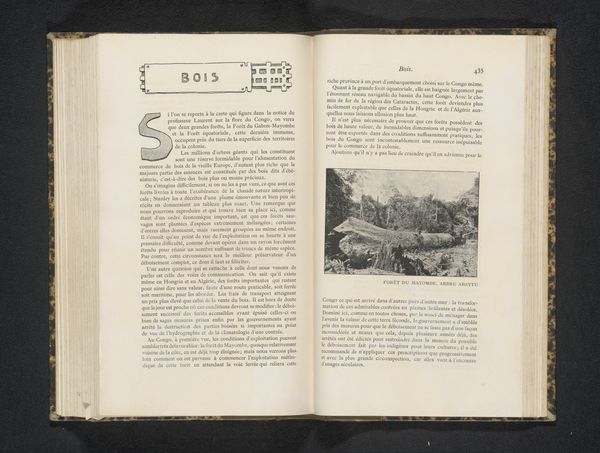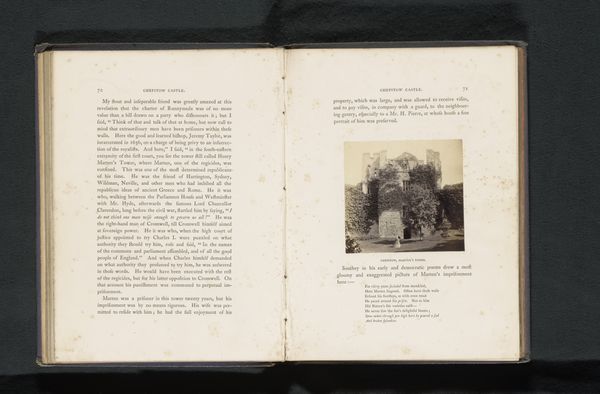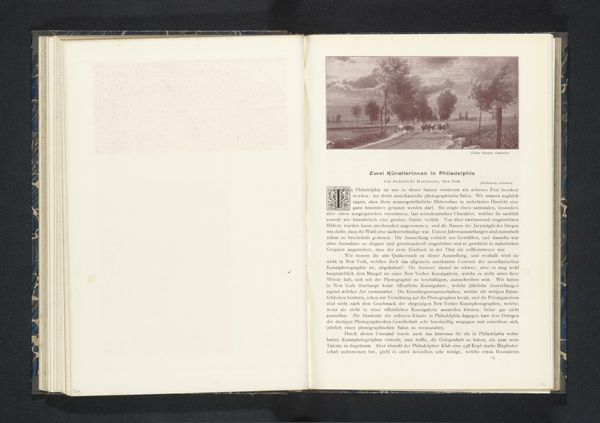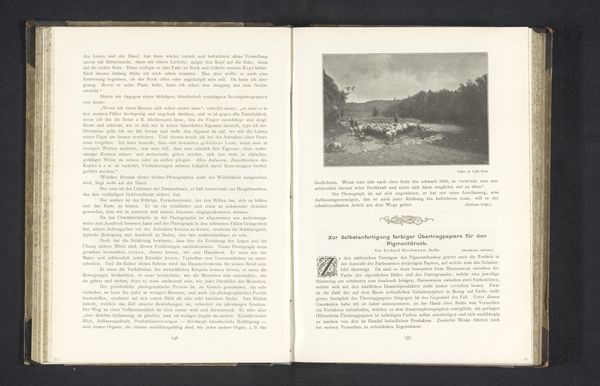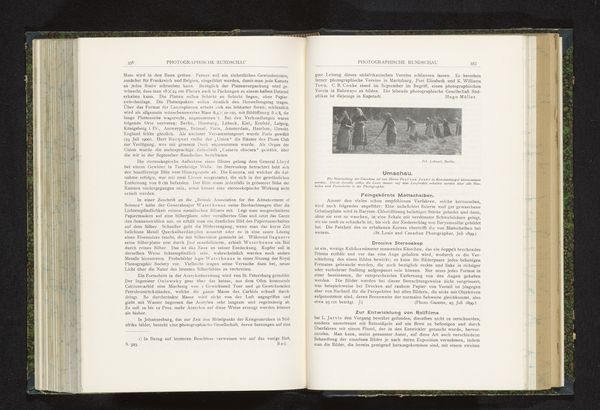
print, photography
# print
#
landscape
#
photography
Dimensions: height 68 mm, width 99 mm
Copyright: Rijks Museum: Open Domain
Curator: We're looking at an intriguing landscape photograph titled "Gezicht op een brug," or "View of a Bridge," which we believe was taken before 1892. The photographer is anonymous, but the scene offers a glimpse into a past world. Editor: It has a slightly eerie stillness to it, wouldn’t you say? Almost like looking into a diorama. The light is diffused, casting a melancholic pall over the whole image. And that slightly crude printing, adds to that sentiment, as if it’s aged through time. Curator: Indeed. This photographic print provides a lens into the colonial gaze of the late 19th century. We see a bridge, likely in what was then the Congo Free State, which brings to mind questions about infrastructure, labor, and power dynamics during that era. Editor: Exactly! Who built that bridge? What purpose did it serve? Who was allowed to cross, and who was excluded? It's easy to romanticize these landscapes, but it is important for us to remember, the photograph documents an imposition on indigenous land and culture. It whispers of forced labor and resource extraction. Curator: Absolutely. The anonymity of the photographer reinforces this point; we’re presented with an outsider's perspective, which may not reflect the lived realities of those in the area. How was photography used to document, control, and ultimately justify colonial exploits? Editor: And that inscription—"Pont en Briques sur une route de Haut-Congo.” Just another route—another resource to extract and control in the Congo. But let's consider the lives of those who crossed it daily—the journeys undertaken, and the resistance simmering beneath the surface. How do they negotiate? Curator: The photograph then serves as a space for both commemoration and resistance. It also is a site where conflicting stories of the landscape can come together: It commemorates the infrastructural advancement through colonial expansion, and serves as an entryway to remember exploitation. Editor: In many ways, it speaks volumes about who is usually afforded the chance to write our histories. When faced with this silence, it becomes imperative for viewers to remember the forgotten perspectives and neglected voices of colonialism.
Comments
No comments
Be the first to comment and join the conversation on the ultimate creative platform.
